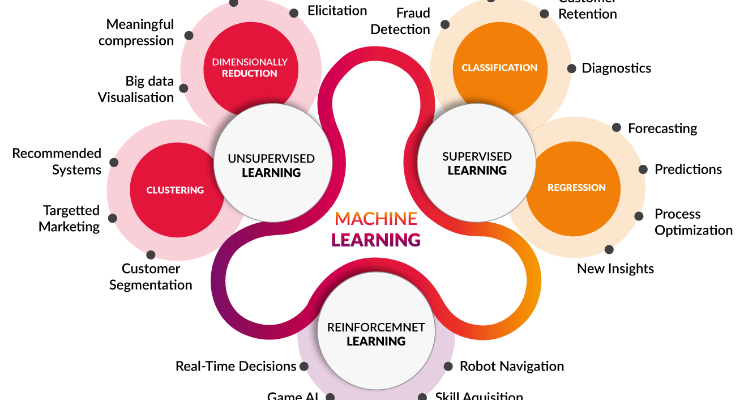Candid Insights
Exploring the latest trends and stories that shape our world.
Machine Learning: More Than Just a Fancy Buzzword
Unlock the secrets of machine learning and discover why it's more than just a buzzword—transform your understanding today!
Understanding the Basics of Machine Learning: A Comprehensive Guide
Machine Learning is a subset of artificial intelligence that enables systems to learn and make decisions based on data. At its core, it involves algorithms that analyze patterns and derive insights without explicit programming. Understanding the fundamentals of machine learning is essential for anyone looking to delve into this rapidly evolving field. There are several key components to grasp:
- Data: The foundation of all machine learning models.Quality and quantity of data significantly impact the performance of the model.
- Algorithms: The methods employed to process data and make predictions. Examples include decision trees, neural networks, and support vector machines.
- Models: The output of machine learning algorithms; they learn from data to make predictions about new, unseen data.
In addition to these components, machine learning can be categorized into three primary types: supervised learning, unsupervised learning, and reinforcement learning. Supervised learning involves training a model on labeled data, allowing it to predict outcomes. Unsupervised learning finds hidden patterns in unlabeled data, while reinforcement learning teaches models to make sequences of decisions through trial and error. Mastering these concepts will empower you with the knowledge to apply machine learning techniques effectively.

How Machine Learning is Transforming Industries: Real-World Applications
Machine Learning is revolutionizing various industries by enabling organizations to leverage data-driven insights for decision making and optimization. In the healthcare sector, for instance, machine learning algorithms are being used for predictive analytics to anticipate patient outcomes and personalize treatment plans. Real-world applications such as diagnostic imaging and drug discovery are showcasing how these technologies can significantly improve patient care and enhance operational efficiency.
Another notable application of machine learning is in the finance industry, where it is transforming risk assessment and fraud detection processes. Financial institutions are utilizing machine learning models to analyze transaction patterns, allowing them to identify anomalies and prevent fraudulent activities in real-time. Furthermore, automated trading systems powered by machine learning algorithms are optimizing investment strategies, making them more responsive to market changes and ultimately driving greater profitability.
Common Misconceptions About Machine Learning: What You Need to Know
Machine learning (ML) is often misunderstood, leading to several common misconceptions that can misguide those looking to understand or implement this powerful technology. One prevalent myth is that machine learning can solve any problem without human intervention. In reality, while ML algorithms can analyze data and make predictions, they require significant guidance from human experts in terms of data selection, feature engineering, and algorithm selection. Ignoring this human element can result in inaccurate models and misguided conclusions.
Another misconception is that machine learning will replace human jobs entirely. While it's true that automation can impact certain roles, machine learning is more about augmenting human capabilities than outright replacement. For instance, ML can help professionals in various fields—such as healthcare, finance, and marketing—make better decisions by processing vast amounts of data quickly and efficiently. Instead of fearing machine learning, individuals should focus on how they can leverage this technology to enhance their work capabilities.